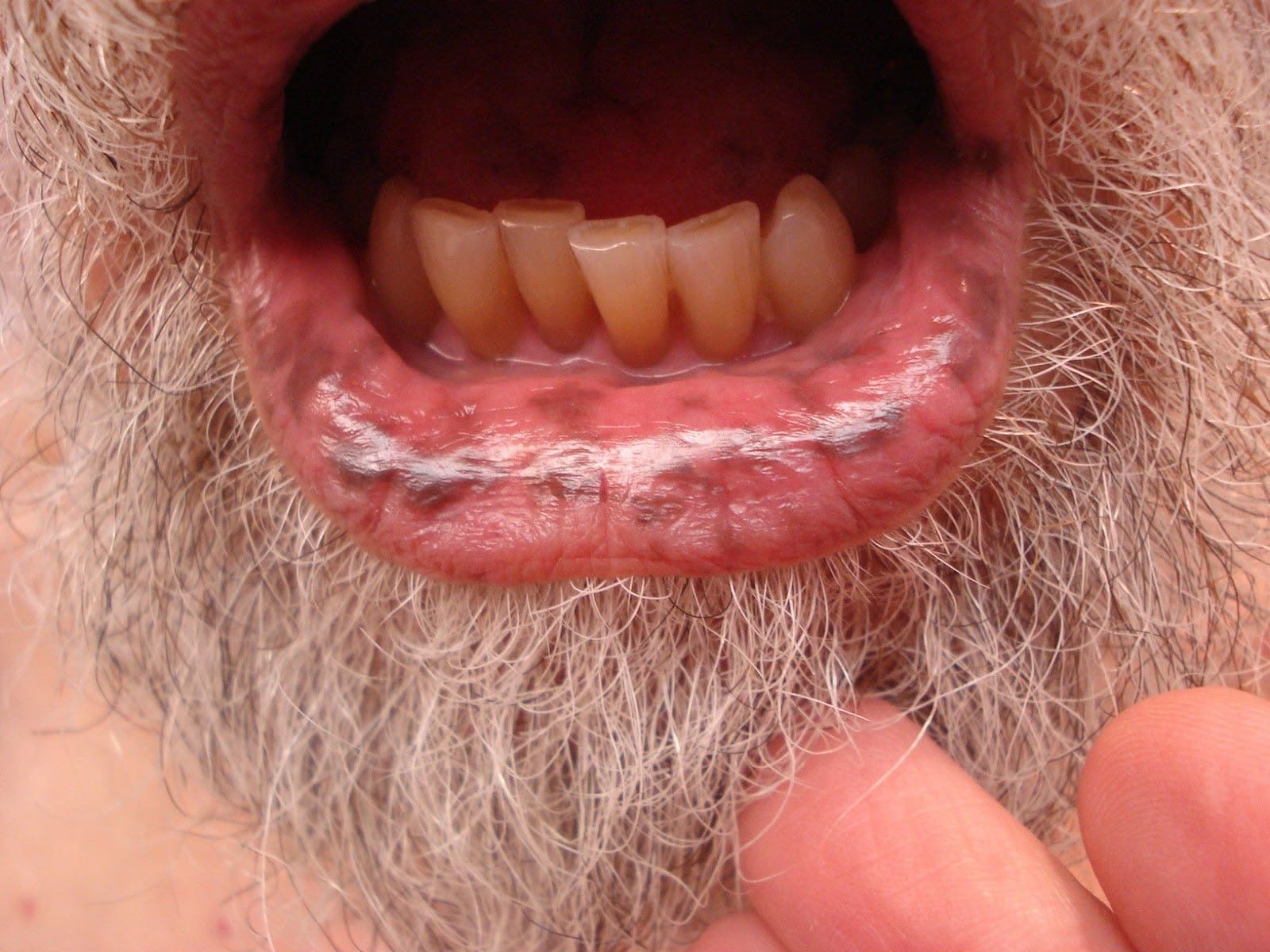
Laugier–Hunziker Syndrome might sound like a mouthful, but it's a rare condition worth knowing about. Ever noticed dark spots on your lips, mouth, or even your nails? These could be signs of this syndrome. Laugier–Hunziker Syndrome is a benign disorder, meaning it's not harmful, but it can be quite puzzling. It usually appears in adults and doesn't come with any other health problems. The exact cause remains unknown, which adds to the mystery. If you or someone you know has these symptoms, it's always good to get checked out by a doctor. Ready to learn more? Let's dive into 30 intriguing facts about Laugier–Hunziker Syndrome.
What is Laugier–Hunziker Syndrome?
Laugier–Hunziker Syndrome (LHS) is a rare, benign condition characterized by hyperpigmentation of the skin and mucous membranes. It primarily affects adults and is often mistaken for more serious conditions due to its appearance. Here are some intriguing facts about this uncommon syndrome.
-
LHS is Non-Cancerous
Despite its alarming appearance, LHS is not associated with cancer. The dark spots are benign and do not indicate malignancy. -
First Described in 1970
The syndrome was first described by Laugier and Hunziker in 1970. Their research brought attention to this rare condition. -
Affects Both Genders Equally
LHS does not discriminate between men and women. Both genders are equally likely to develop this syndrome. -
Commonly Appears in Middle Age
Most cases of LHS are diagnosed in individuals between 40 and 60 years old. However, it can occur at any age. -
Pigmentation on Lips and Mouth
One of the hallmark signs of LHS is hyperpigmentation on the lips and inside the mouth. These dark spots can vary in size and shape.
Symptoms and Diagnosis
Understanding the symptoms and how LHS is diagnosed can help in distinguishing it from other conditions. Here are some key points.
-
Nail Involvement
LHS often causes pigmentation changes in the nails, leading to dark streaks or bands. -
No Systemic Symptoms
Unlike some other syndromes, LHS does not cause systemic symptoms. Patients typically do not experience pain or discomfort. -
Biopsy for Confirmation
A biopsy of the affected area can help confirm the diagnosis of LHS. This involves taking a small tissue sample for examination. -
Differential Diagnosis
LHS must be differentiated from other conditions like Addison's disease, Peutz-Jeghers syndrome, and melanoma. Accurate diagnosis is crucial. -
No Genetic Link
There is no known genetic link for LHS. It does not run in families, making it a sporadic condition.
Treatment and Management
While LHS is benign, managing its symptoms can improve the quality of life for those affected. Here are some treatment and management facts.
-
No Cure
Currently, there is no cure for LHS. Treatment focuses on managing symptoms and improving cosmetic appearance. -
Laser Therapy
Laser therapy can be used to reduce the appearance of pigmented spots. This treatment is often effective but may require multiple sessions. -
Topical Treatments
Some topical treatments can help lighten the pigmented areas. These include creams containing hydroquinone or retinoids. -
Regular Monitoring
Regular monitoring by a dermatologist is recommended to ensure that the pigmentation does not change or indicate another condition. -
Psychological Impact
The visible nature of LHS can have a psychological impact. Counseling or support groups can be beneficial for those affected.
Interesting Facts and Miscellaneous Information
Here are some additional interesting facts and miscellaneous information about LHS that you might find intriguing.
-
Rare Condition
LHS is considered a rare condition, with only a few hundred cases reported worldwide. -
No Known Cause
The exact cause of LHS remains unknown. Researchers continue to study this condition to uncover potential triggers. -
Not Contagious
LHS is not contagious. It cannot be spread from person to person through contact. -
No Impact on Life Expectancy
LHS does not affect life expectancy. Individuals with this syndrome can live a normal lifespan. -
Cosmetic Concerns
Many individuals seek treatment for LHS due to cosmetic concerns rather than medical necessity.
Research and Future Directions
Ongoing research aims to better understand LHS and improve treatment options. Here are some insights into current research and future directions.
-
Genetic Studies
Researchers are conducting genetic studies to determine if there are any underlying genetic factors associated with LHS. -
New Treatment Options
New treatment options are being explored, including advanced laser therapies and novel topical treatments. -
Increased Awareness
Increased awareness and education about LHS can lead to earlier diagnosis and better management of the condition. -
Patient Registries
Patient registries are being developed to collect data on LHS cases. This information can help researchers identify patterns and trends. -
Collaboration Among Specialists
Collaboration among dermatologists, geneticists, and researchers is crucial for advancing our understanding of LHS.
Conclusion
Laugier–Hunziker Syndrome is a rare but benign condition that primarily affects the skin and mucous membranes. While it can be mistaken for more serious conditions, understanding its symptoms, diagnosis, and management can help alleviate concerns. Ongoing research and increased awareness are key to improving the lives of those affected by LHS.
-
Support Groups
Support groups for individuals with LHS can provide emotional support and practical advice for managing the condition. -
Educational Resources
Educational resources for healthcare providers can improve the diagnosis and management of LHS. -
Case Studies
Publishing case studies can help raise awareness and provide valuable information for medical professionals. -
Patient Advocacy
Patient advocacy groups can play a vital role in raising awareness and supporting research efforts. -
Hope for the Future
With ongoing research and advancements in treatment, there is hope for better management and understanding of LHS in the future.
Final Thoughts on Laugier–Hunziker Syndrome
Laugier–Hunziker Syndrome, while rare, offers a fascinating glimpse into the complexities of dermatological conditions. This syndrome, characterized by hyperpigmentation of the lips, oral mucosa, and nails, often gets mistaken for more serious ailments. Understanding its benign nature can ease unnecessary worries and prevent misdiagnosis.
Awareness is key. Knowing the signs and symptoms helps in distinguishing it from other conditions like Peutz-Jeghers syndrome or Addison's disease. Though it doesn't require treatment, regular check-ups ensure no underlying issues are missed.
For those affected, embracing the unique aspects of Laugier–Hunziker Syndrome can lead to better self-acceptance and confidence. Sharing knowledge about this condition can also foster a supportive community.
Stay informed, stay curious, and remember that every skin condition tells a story worth understanding.
Was this page helpful?
Our commitment to delivering trustworthy and engaging content is at the heart of what we do. Each fact on our site is contributed by real users like you, bringing a wealth of diverse insights and information. To ensure the highest standards of accuracy and reliability, our dedicated editors meticulously review each submission. This process guarantees that the facts we share are not only fascinating but also credible. Trust in our commitment to quality and authenticity as you explore and learn with us.


